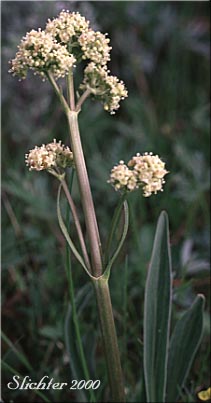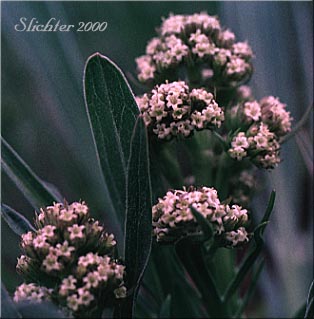

Edible Valerian/Tobacco Root
Valeriana edulis Nutt.
Edible valerian is a tall, erect perennial that ascends 2 to 5 feet from a stout, fleshy pale green taproot. The inflorescence is a panicle, often compact during bloom and elongating or expanding in fruit. The flowers have a five parted perianths, and funnel-shaped, short-spurred corollas that are generally yellowish-white in color. The species name edulis meas edible. The taproot, when cooked was eaten by native Americans. The plant has an unpleasant odor, likened to "dirty feet", but after cooing the plant is more palatable. Edible valerian grows in moist meadows to slightly dry sites in mountain or subalpine zones. It is generally found in many damp places, low-lying marshy, swampy ground.
Food uses: It can be ground into flour to use in the form of bread or mush. The dried root is used in broths, porridge, and meats as a counterpoison.
Medical uses: It has a warm, camphoraceous, slightly bitter, somewhat acrid, and nauseous taste growing stronger with age. It is used as an antispasmodic, calmative, stimulating tonic, and nervine. It is used commonly as a nerve tonic. It is known in folk medicine as having a general calming and sedative effect on the stomach, intestines, and blood vessels, nervous heart conditions. In medical doses it acts as a stimulating tonic, antispasmodic, and calmative. In large doses it causes headaches, mental excitement, visual illusions, giddiness, restlessness, agitation, and even spasmodic movement. An infusion of 1/2 cupful of the root can be used in the bath to relieve nervous exhaustion.
